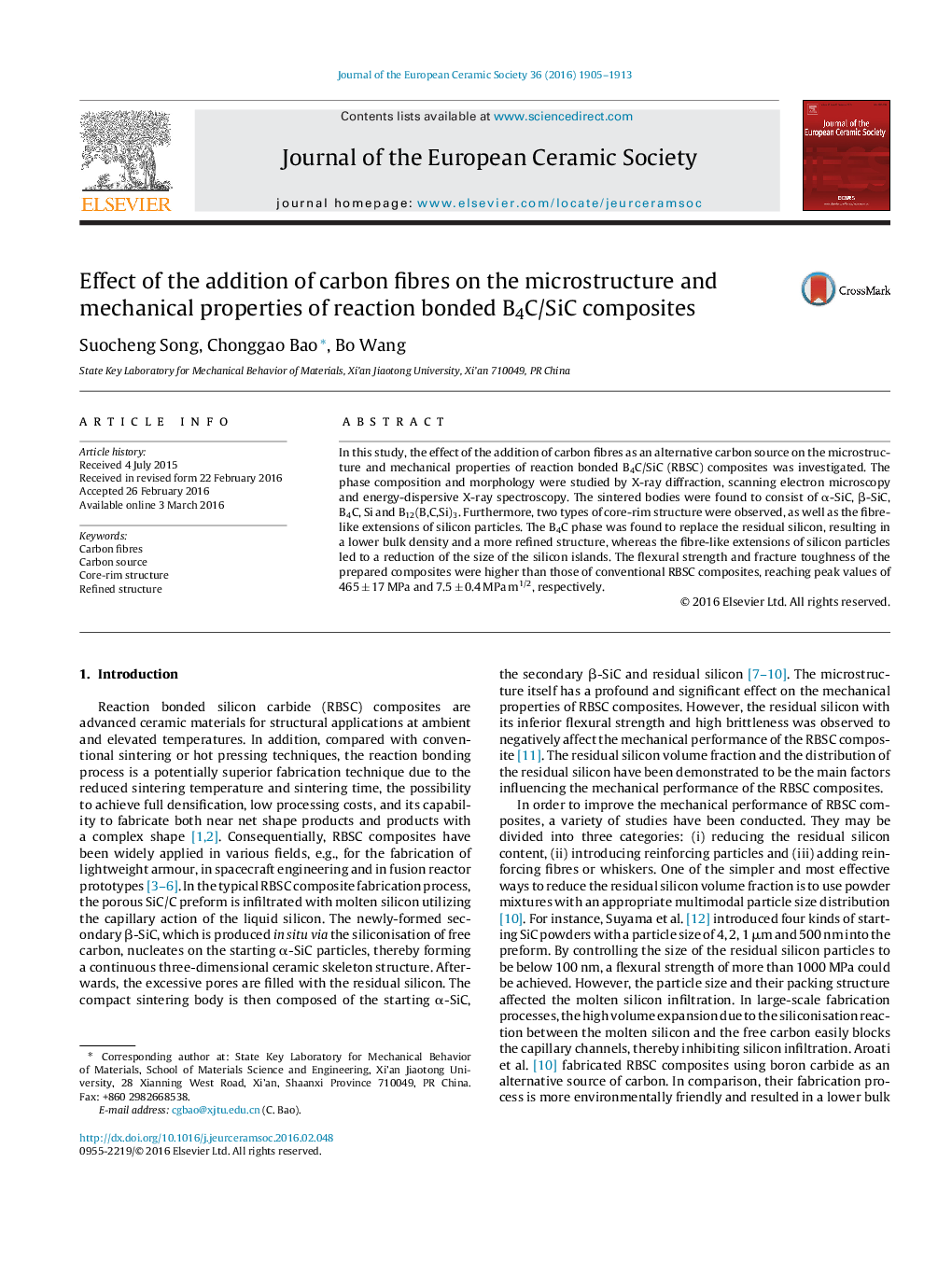| Article ID | Journal | Published Year | Pages | File Type |
|---|---|---|---|---|
| 1473614 | Journal of the European Ceramic Society | 2016 | 9 Pages |
In this study, the effect of the addition of carbon fibres as an alternative carbon source on the microstructure and mechanical properties of reaction bonded B4C/SiC (RBSC) composites was investigated. The phase composition and morphology were studied by X-ray diffraction, scanning electron microscopy and energy-dispersive X-ray spectroscopy. The sintered bodies were found to consist of α-SiC, β-SiC, B4C, Si and B12(B,C,Si)3. Furthermore, two types of core-rim structure were observed, as well as the fibre-like extensions of silicon particles. The B4C phase was found to replace the residual silicon, resulting in a lower bulk density and a more refined structure, whereas the fibre-like extensions of silicon particles led to a reduction of the size of the silicon islands. The flexural strength and fracture toughness of the prepared composites were higher than those of conventional RBSC composites, reaching peak values of 465 ± 17 MPa and 7.5 ± 0.4 MPa m1/2, respectively.
